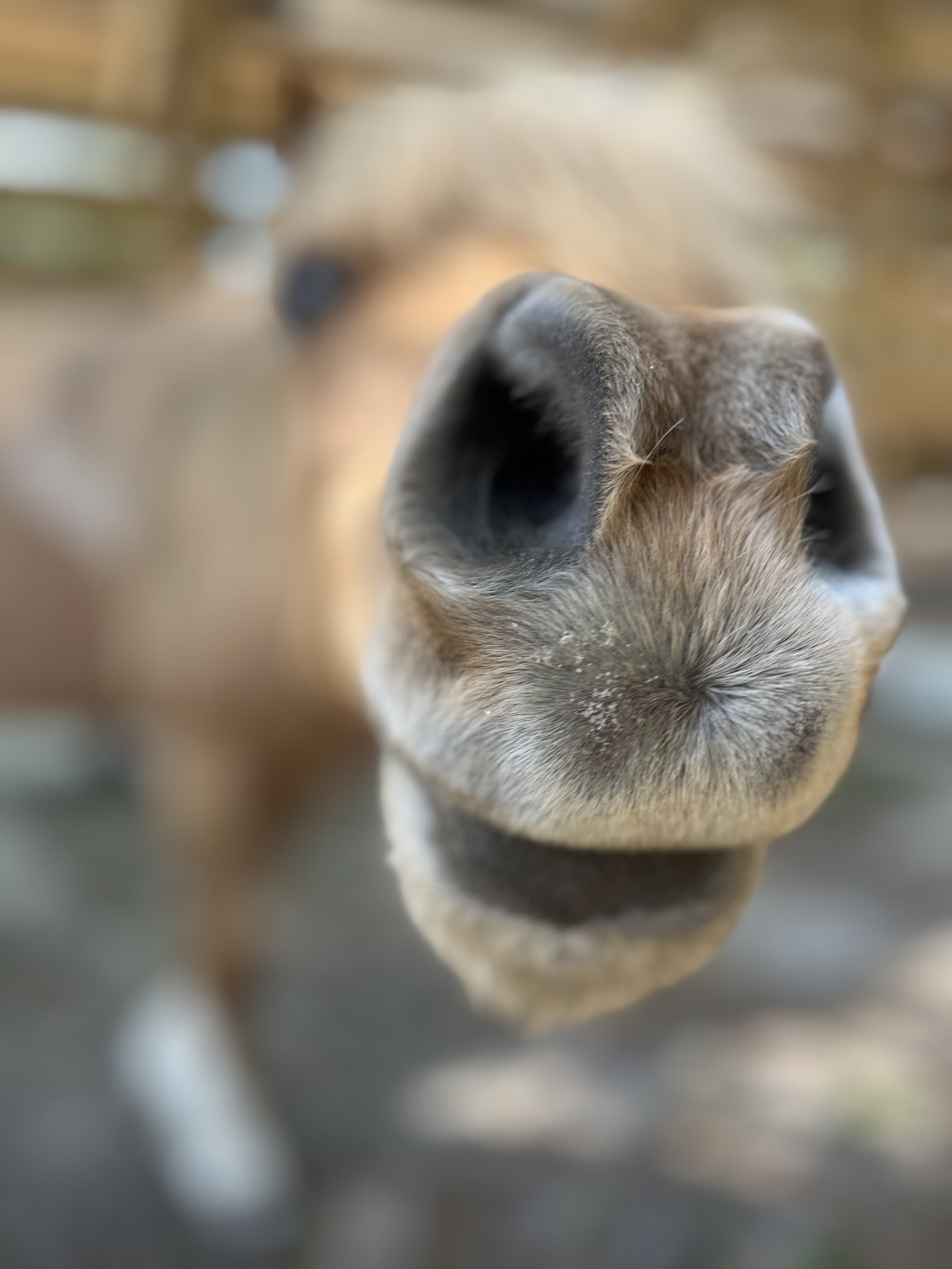Catching Your Horse Made Easy
For many people, catching their horses can be a real challenge. I often read on social media about people who have spent hours chasing their horses around the pasture, unable to catch them. The result is usually anger and frustration. Many horses end up being sold or sent to auction because the owners feel like they can’t connect with them.
The good news is that with a little bit of training, you can teach your horses to come to you instead of having to chase them.
The first thing you need to do to train your horse to be catchable is to stop trying to catch them! This may seem counterproductive, but your intention during training will affect your outcome, and training is a process, not a one-time event. If you are trying to grab your horse at every opportunity that presents itself, your horse will become increasingly reluctant to participate.
Step One: creating positive associations
Step one in the training process is to create positive associations for your horse, both in your approaching them and in them approaching you.
Go to your horse with enough food or treats for 5 to 10 repetitions. If your horse allows you to approach them and they will take food from you, then you can hand feed them during this exercise. If not, you may need 3 to 5 buckets.
If you can hand feed your horse, walk up to them, close enough for them to notice you but not so close that they start to move away. Offer them a handful of food and wait for them to come to you and eat it. As soon as they do, take a few steps away and wait for them to come to you again.
If your horse will not approach and eat out of your hand, walk up to them, close enough for them to notice you but not so close that they start to move away. The second your horse looks at you, put a small handful of food in a bucket and place the bucket on the ground. Walk away from the bucket allowing your horse to come and eat.
When your horse finishes, they will likely look at you again, at which point you will again put some food in the bucket and place it on the ground. Continue doing this, placing the buckets in such a way that they brings you around in a circle so that you can pick buckets up without moving towards your horse.
As you practice, you’ll start to notice some things. Your horse may start moving towards as soon as they finish what’s in the bucket, or at least before you’ve finished placing the next one, and you won’t have to move as far away to let them eat. As you progress, you will be able to switch to hand feeding and set aside the buckets for now. Your goal is to get to a point where you can’t walk away from your horse anymore because they stay right with you.
Step Two: introducing the halter
Once your horse is confidently coming up to you and eating from your hand instead of the buckets, you can get the halter. Keep in mind that the sight of the halter will set your horse back, so don’t give up the buckets just yet! You may need to repeat the process above with the halter added to the mix.
If your horse is particularly sensitive to being caught, start with the halter over your shoulder. Work through the process above until your horse is again coming up to you confidently and eating out of your hand. Next, drop the halter down to your forearm and see how your horse feels about that. You may need to return to the buckets again with the halter in hand to build up your horse’s confidence.
Step Three: putting the halter on
If your horse is already trained to the halter and has no problem putting it on, you can do that. If your horse is avoiding the halter or throwing their head up in the air when you try to put it on, you’ll need to take some time to work through that issue, too.
When your horse walks up to you, give them a bite of food to reinforce coming to you, then put the halter on. Once it’s on, give them another bite of food, take the halter off, and take a few steps away. Repeat, repeat, repeat.
Keep in mind that if you do things that your horse doesn’t really enjoy every time you go out to catch them, the behavior will deteriorate again very quickly, and it will become difficult to catch your horse again. Pleasant experiences once caught have to outweigh the not-so-pleasant ones in order to maintain the behavior, so make sure you’re not just catching them to work every time.

